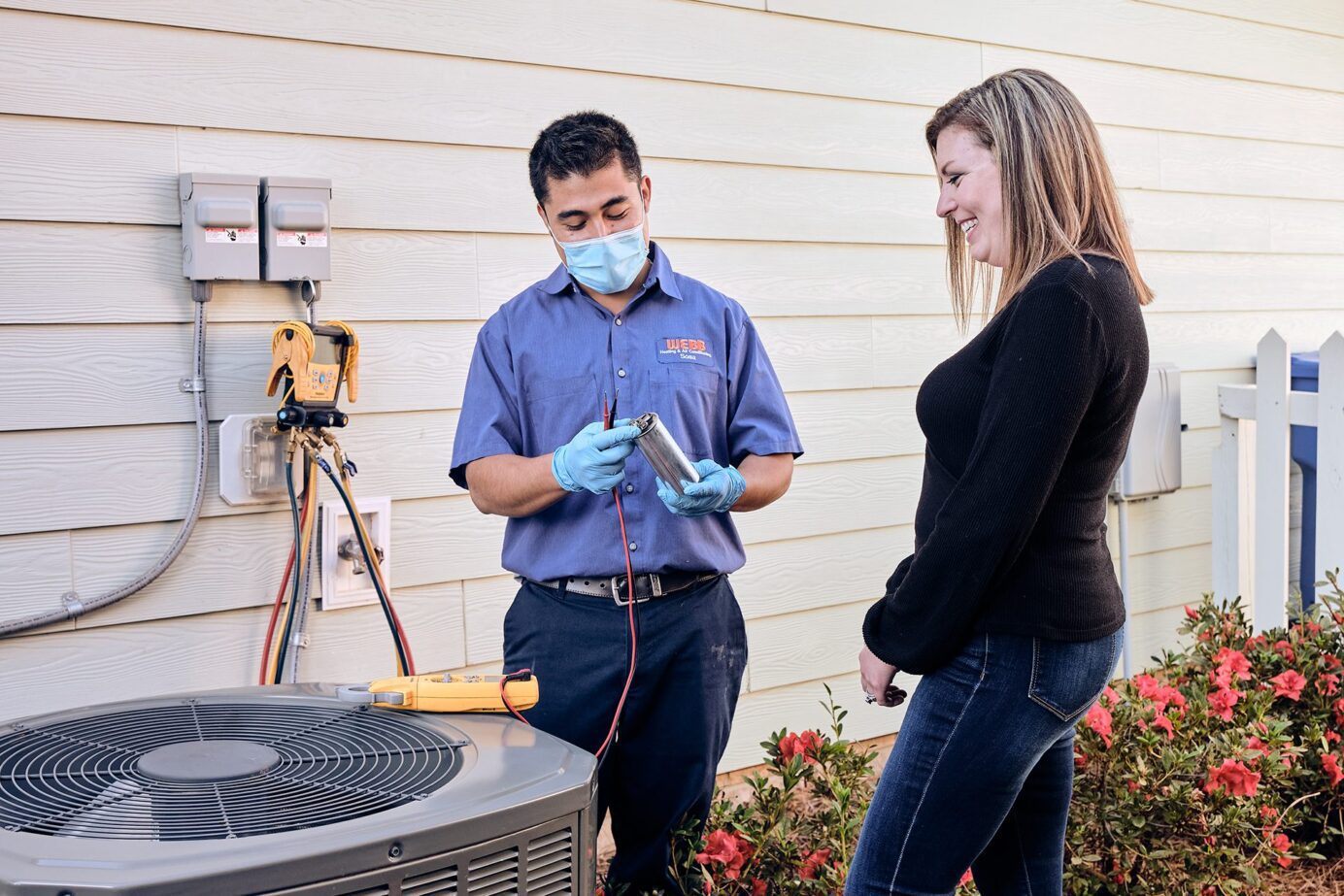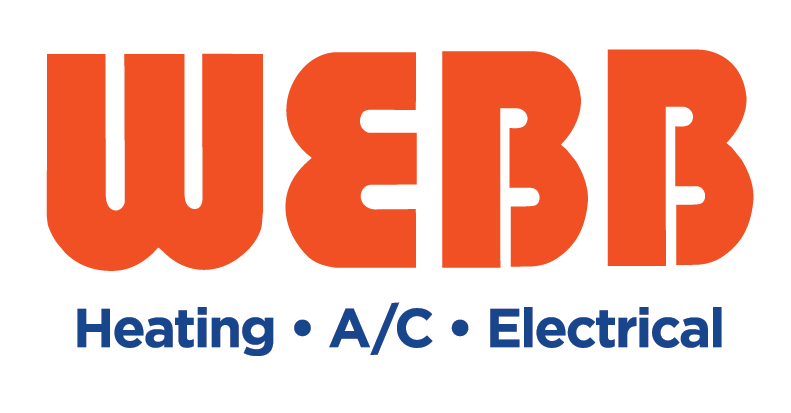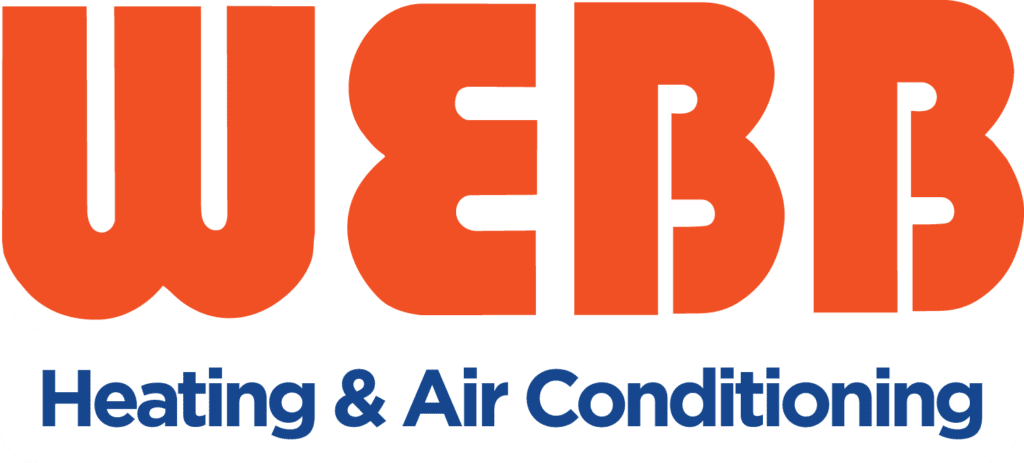Is Carbon Monoxide Poisoning a Risk with Furnaces in North Carolina?

Carbon monoxide poisoning is a serious risk for any homeowner with a gas furnace. This invisible, odorless gas can leak into your home when furnace components malfunction or when venting systems become blocked.
Understanding the warning signs and taking preventive action can protect your family from this dangerous threat.
Webb Heating, Air Conditioning, and Electrical helps North Carolina homeowners maintain safe heating systems throughout Greensboro, Winston-Salem, and the surrounding Piedmont Triad region.
Understanding Carbon Monoxide Risks with Furnaces
Gas furnaces produce carbon monoxide when they burn fuel to generate heat. Normally, this toxic gas gets vented safely outside through your exhaust system.
Problems develop when something interferes with this venting process. A cracked heat exchanger, for example, can leak carbon monoxide directly into your home’s air supply. Blocked vents prevent the gas from escaping outside, causing dangerous buildup indoors.
Greensboro’s humid climate can accelerate corrosion in metal furnace components over time. This moisture-related deterioration can compromise the integrity of heat exchangers and venting systems, potentially creating pathways for carbon monoxide to enter your living space.
Furnace components naturally wear over years of operation. What begins as minor deterioration can develop into serious safety hazards if systems aren’t properly maintained. Webb’s expertise in identifying and mitigating these hazards ensures North Carolina homeowners can heat their homes safely.
Is CO Poisoning a Concern in North Carolina?
Carbon monoxide poisoning is definitely a concern throughout North Carolina. Multiple factors contribute to increased risks in our state’s homes.
Aging furnaces present elevated dangers, particularly in Winston-Salem’s established neighborhoods where older systems may lack modern safety features. These furnaces often don’t include automatic shutoff controls that newer models use to prevent dangerous operation when problems develop.
Rural areas like Advance face unique challenges. Blocked vents from accumulated outdoor debris—like leaves, twigs, or even animal nests—can prevent safe ventilation, causing dangerous gases to back up into homes instead of venting safely outside.
The Piedmont Triad’s mild winters can also create a false sense of security around heating safety. Homeowners may improperly use supplemental heating sources like space heaters, fireplaces, or generators without ensuring adequate ventilation, creating additional carbon monoxide risks beyond their primary heating systems.
Signs of Carbon Monoxide Issues
Carbon monoxide exposure symptoms often mimic common illnesses, making them difficult to recognize.
Early symptoms include:
- Headaches that persist or worsen when at home
- Nausea and dizziness without other illness signs
- Unusual fatigue or weakness affecting multiple household members
- Confusion or difficulty concentrating
Pay close attention if several family members develop similar symptoms simultaneously. Symptoms that improve when you leave home and return when you come back strongly suggest indoor air quality problems.
Your furnace may also display warning signs of carbon monoxide issues:
- Yellow or orange flames instead of steady blue flames
- Soot buildup around vents or on the furnace cabinet
- Excessive moisture on windows when the furnace operates
- Strange odors or unusual operational sounds
Don’t dismiss these signs as minor issues. Even subtle changes in your furnace’s appearance or operation can indicate developing safety problems that require immediate professional attention.
Carbon monoxide detectors provide essential protection for every North Carolina home. Install these devices on every level, especially near sleeping areas, and test them monthly to ensure proper function.
Preventing Carbon Monoxide Poisoning
Regular furnace maintenance provides the most effective defense against carbon monoxide problems. Annual professional inspections can identify potential issues before they create dangerous conditions.
During these inspections, technicians typically check heat exchangers for cracks, clean burner components, and test venting systems using specialized equipment to measure carbon monoxide levels.
Between professional visits, homeowners can take several protective steps.
For example, changing furnace filters regularly can help you maintain proper airflow. North Carolina’s humid environment can affect filter performance, making regular changes especially important for safe operation.
Another important step is to install carbon monoxide alarms near sleeping areas. These detectors provide early warning if dangerous levels begin to accumulate, giving families crucial time to evacuate and address the problem.
Additional prevention measures include:
- Keeping outdoor vents clear of snow, leaves, and debris after storms
- Never using generators, grills, or camp stoves indoors or in garages
- Scheduling annual chimney cleaning if you use a fireplace
- Arranging immediate professional service if you notice any warning signs
If your furnace hasn’t been professionally serviced recently, don’t delay scheduling an inspection. Carbon monoxide problems can develop without obvious symptoms, making proactive maintenance essential for family safety.
Why Choose Webb Heating, Air Conditioning, and Electrical?
Webb serves homeowners throughout Greensboro, Winston-Salem, Advance, and the Piedmont Triad with comprehensive heating system safety services. Our experienced technicians understand how North Carolina’s climate impacts your furnace’s operation, and can help you prevent carbon monoxide issues in your home.
Webb offers thorough safety inspections, preventive maintenance, and expert repairs to keep your heating system operating safely and efficiently. Our commitment to customer safety and local expertise makes Webb a trusted partner for many North Carolina families.
Don’t risk your family’s safety with an uninspected furnace. Contact Webb today to schedule your comprehensive heating system safety evaluation and ensure reliable, safe operation throughout the heating season.

